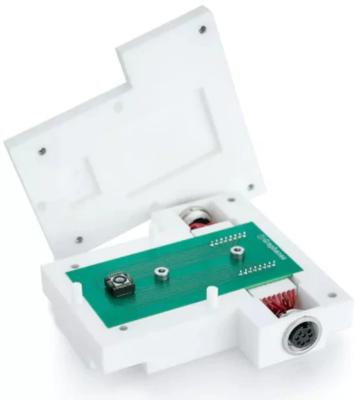The Graphene-Info weekly newsletter
Published: Tue, 03/08/22
The Graphene-Info newsletter (March 8, 2022)
Cannot read this? View it online here
Graphene producer Novusterra files to IPO at the NASDAQ
Novusterra, a US-based graphene producer has filed for an IPO at the NASDAQ. The company hopes to raise about $15 million in the public offering. If successful, the company's ticker will be NOVS.
For 2021, Novusterra reported zero revenue and a net loss of $308K for 2021. With the proceeds from the IPO the company plans to build a plant for its joint venture with American Resources Corp. to manufacture graphene using technology licensed from Ohio University. It also plans to fund joint ventures with or acquisitions of companies using alternative methods to produce graphene or graphene products, along with general corporate purposes.
Honor Magic 4 series to adopt graphene cooling tech
The Honor Magic 4 Pro is about to be launched, and it is said to join a long list of mobile devices with graphene-based cooling technology.
The Honor Magic 4 series will reportedly adopt 'third-generation graphene technology – superconducting hexagonal graphene' that improves the thermal conductivity by 50% compared with the first-generation graphene.
Paragraf raises $60 Million in Series B financing round
Paragraf has closed $60 Million Series B financing round, led by New Science Ventures, a US deep tech investor, investing in novel scientific approaches in the Life Sciences and Information Technology sectors. The funding will help the company scale the business as it continues its international growth by increasing its activities in the UK, US, EU and Asia, boosting its R&D capabilities to advance its technology and product development capacity, and expanding its manufacturing infrastructure.
The round included current investors Parkwalk, Amadeus Capital Partners, IQ Capital and Molten Ventures, as well as new investors British Patient Capital through its Future Fund: Breakthrough and US based, In-Q-Tel.
New graphene-enhanced asphalt trial to take place on Oxford road
Two stretches of an Oxford, UK road will be resurfaced with GiPave, a graphene-enhanced asphalt material, to test the benefits of the product which can significantly increase the life of a road.
Marsh Lane in Oxford, which carries around 10,000 vehicles a day along a key city route, will be used for the trial. Half of a 700-metre stretch of the road will be laid with GiPave, while the rest will be resurfaced using conventional asphalt, so that the two surfaces can be compared accurately.
GMG to work with Wood on graphene manufacturing expansion projects
Graphene Manufacturing Group (GMG) has announced that it has entered into a non-binding Letter of Intent with Wood (a consulting and engineering company), with an aim to reach binding agreements for Wood to design and deliver major graphene manufacturing expansion projects.
Wood will support GMG in scaling up and automating its proprietary natural gas to graphene manufacturing process. The parties’ intent is for Wood to become GMG’s engineering, design and construction contractor for GMG’s near and long-term graphene manufacturing facility needs in Australia and overseas.
Researchers show that graphene quantum dots can block SARS-CoV-2 Variant from entering cells
A recent study has reported the use of human host defense peptide-conjugated graphene quantum dots for the prevention of virus entry into host cells.
Research on the SARS-CoV-2 virus mainly focuses on the spike protein (S1) which contains the receptor-binding domain (RBD) and the binding of this to the angiotensin converting enzyme 2 (ACE2) receptor within epithelial cells enables the virus to enter host cells in humans. This research resulted in the spike protein becoming a target for vaccines that aimed to produce neutralizing antibodies against the S-RBD. But while this concept seemed useful, recent reports have suggested the mutations on the SARS-CoV-2 virus and specifically in the S-RBD, can cause a decline in the level of neutralizing antibodies against the delta (B.1.617.2) variant that may have been produced during a previous infection or from immunization via a vaccine.
Researchers develop a graphene oxide aerogel foam to improve all solid state lithium batteries
Researchers from China's Jiangsu University and Changzhou University have developed a non-ceramic solid-state electrolyte based on a graphene oxide (GO) aerogel framework filled with polyethylene oxide.
Li-ion batteries currently perform a key role in electric cars, but contain combustible liquid electrolytic materials which may pose major safety issues. The solid-state electrolyte (SSE) can replace the standard organic liquid electrolyte and is predicted to address safety issues such as leaking, heat runaway, and even explosions during operation.
Graphenea launches Cartridge S2X for easy fabrication of graphene-based sensors
Graphenea has released a new product intended to make sensing with graphene easier: The Cartridge S2X, a package that interfaces the graphene microdevice and the electrical equipment used for its readout.

The cartridge has a small cleft onto which to place the GFET die, just below the electronics module with gentle pogo contacts to the graphene chip. The contacts are placed for seamless integration with Graphenea's S20, S21, S20P and S21P graphene chips that are especially designed for biosensing. The design makes use of 8 connections to the chip, including six source electrodes, one drain, and one gate. The pins are routed to a standard 8-pin BNC connector, for an easy and robust link to external measurement equipment.
Researchers control the relaxation time of graphene
Researchers from CNR-IFN, Politecnico di Milano, the University of Pisa, the Graphene Center of Cambridge (UK) and ICN2 of Barcelona (Spain) have shown that the relaxation time of graphene charge carriers can be significantly modified by applying an external electrical field.
Graphene is able to efficiently absorb light from the visible to the infrared through the photoexcitation of its charge carriers. After light absorption, its photoexcited charge carriers cool down to the initial equilibrium state in a few picoseconds, corresponding to a millionth of a millionth of a second. The remarkable speed of this relaxation process makes graphene particularly promising for a number of technological applications, including light detectors, sources and modulators.








